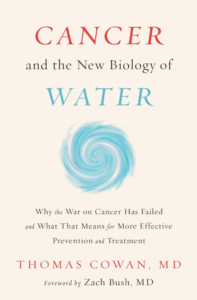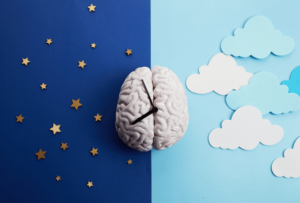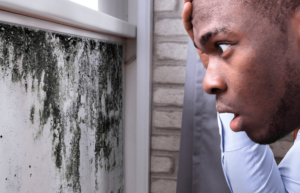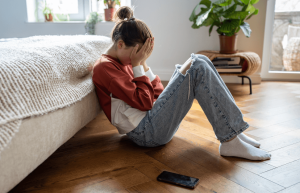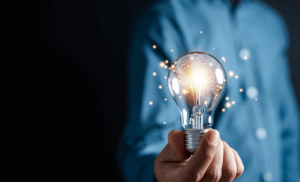
As the days grow shorter and winter sets in, our exposure to light—especially natural light—takes a significant hit. But did you know that the type of light you expose yourself to can drastically impact your health? From how you sleep to how you feel, light plays a key role in regulating your body’s rhythms and maintaining your overall well-being. In this guide, we’ll explore the difference between natural and artificial light, simple strategies to optimize your light exposure, and how it all ties back to your health—particularly your spinal health.
The Difference Between Natural Light and Junk Light
Think of light like food. Just as junk food can harm your body, “junk light” can create chaos within your systems. Natural light—such as sunlight—provides a full spectrum of colors and wavelengths that our bodies are designed to use. Junk light, on the other hand, comes from artificial sources like LED bulbs, fluorescent lights, and screens, and it disrupts our natural rhythms.
Why Natural Light is Crucial
Sunlight contains a balanced mix of colors, including red, infrared, and ultraviolet (UV) light, which are essential for signaling your body to perform various tasks. It changes throughout the day, helping regulate your circadian rhythm, your body’s internal clock that controls sleep, energy levels, hormone production, and more. Unfortunately, if you are farther away from the equator like us in Chelan, WA, we have significantly less sunlight this time of year.
The Impact of Junk Light
In our modern society, we have never had more artificial light than now ranging from high beam car lights at night, to the phones and computers we use, to the very light bulbs we use homes and offices. Artificial light sources emit a limited spectrum of colors, often dominated by blue light. This can confuse your brain, disrupting your circadian rhythm and leading to problems such as poor sleep, fatigue, and inflammation. Overexposure to artificial light has even been linked to long-term health issues like hormonal imbalances and weight gain.
Why Light Matters for Your Health
Light isn’t just about seeing; it directly affects your biology at a cellular level. Here’s why it matters:
Circadian Rhythm Regulation
Your body’s internal clock, the circadian rhythm, relies on light cues to synchronize vital processes like hormone production, digestion, and sleep. Natural light exposure helps regulate this clock, while exposure to artificial or “junk light” can disrupt it, leading to poor sleep, fatigue, and even chronic health issues.Hormonal Impact
Light exposure directly influences the production of serotonin (your mood-boosting neurotransmitter) and melatonin (your sleep hormone). Morning light exposure kickstarts serotonin production, which later converts to melatonin for restful sleep.Cellular Energy Production
Natural sunlight, particularly red and infrared light, penetrates the skin and interacts with your mitochondria—the energy powerhouses of your cells. This process enhances ATP production, which fuels cellular repair and energy levels.
Morning Light: Setting the Tone for the Day
One of THE most powerful

things you can do for your health is to expose yourself to natural light first thing in the morning. This simple act:
- Reinforces Your Circadian Rhythm: Natural light in the morning signals your brain that it’s time to wake up, boosting your energy and focus for the day.
- Supports Hormone Regulation: Morning light exposure helps trigger the production of serotonin, a feel-good hormone, which later converts to melatonin to improve sleep quality.
How to Start
- See the Sunrise: Spend 2-3 minutes outside, ideally barefoot and without sunglasses or screens, to soak in the morning light. Here Chelan we have cold winters so this can be tough this time of year, but don’t let the cold keep you from this amazing free health hack.
- Be Consistent: Even cloudy days provide enough light to signal your brain, so don’t skip this practice.
- Block Artificial Light Before Sunrise: If you’re awake before dawn, use orange-tinted glasses to block blue light from screens and artificial bulbs.
Mid-Morning Boost: The Power of UVA Light
As the sun rises higher, it introduces ultraviolet A (UVA) light into the spectrum. UVA exposure has been shown to:
- Boost serotonin and dopamine levels, enhancing mood and focus.
- Stimulate the production of endorphins, which reduce pain and inflammation.
- Support thyroid function and energy regulation.
How to Get UVA Light
About an hour after sunrise, spend 15-20 minutes outside. This could be a short walk, a coffee break on your porch, or simply sitting by an open window.
Light and Chiropractic Care: A Vital Connection
As a chiropractor, I emphasize how every aspect of your lifestyle—including light exposure—affects your body’s alignment and functionality. Poor light habits can contribute to stress, inflammation, and disrupted sleep, which may exacerbate issues like back pain and tension. By integrating better light practices, you not only improve your overall health but also support the benefits of chiropractic adjustments.
Tips to Combat Winter Light Deficiency
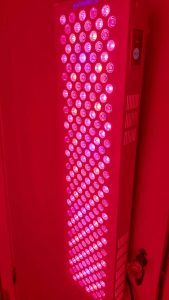
Winter poses unique challenges, with shorter days and less sunlight. Here are some actionable tips to stay aligned with nature’s rhythms:
- Get Outside Daily: Even a quick walk during daylight hours can help regulate your circadian rhythm.
- Invest in Red Light Therapy: Devices like infrared lamps mimic some of the benefits of sunlight and can be especially helpful in winter. My favorite include: platinumLED, Mitoredlight, and Infarredi. I use mine almost daily during the winter since it has so many benefits including: wound healing, increased energy, and muscle recovery to name a few.
- Switch to Warmer Indoor Lighting: Use incandescent bulbs or other low-blue light options in your home to reduce exposure to junk light.
- Block Blue Light at Night: Use blue-blocking glasses or apps that adjust screen brightness to warmer tones after sunset. I use F.lux on my computer and Twilight on my phone. Both are free apps. If you have apple products you can turn the phone on the night mode.
Take the First Step Toward Better Health
Optimizing your light exposure is one of the simplest yet most impactful changes you can make for your health. Whether it’s seeing the sunrise, blocking blue light, or stepping outside mid-morning, every small habit adds up.
And if you’re dealing with pain or tension, remember: light is just one piece of the puzzle. Chiropractic care can help address the root causes of your discomfort, aligning your body for optimal performance.
Special Winter Offer
To help you take the next step in your health journey, we’re offering $20 off your first visit when you book before the holidays. Let’s work together to keep your body—and your light exposure—in alignment this winter.
By incorporating these strategies into your daily life, you can thrive during the darker months and enjoy better sleep, more energy, and less pain. Want more tips? Sign up for our newsletter and keep an eye out for a more in depth guide coming soon!
National Institute of General Medical Sciences (NIGMS)
“Circadian Rhythms.”
URL: https://www.nigms.nih.gov
Provides foundational information on the importance of circadian rhythms in regulating bodily functions.Harvard Health Publishing
“Blue Light Has a Dark Side.”
URL: https://www.health.harvard.edu
Explains the effects of blue light exposure on sleep and health, particularly the disruption of circadian rhythms.Journal of Clinical Sleep Medicine
“The Impact of Light on Outcomes in Healthcare Settings.”
URL: https://jcsm.aasm.org
Highlights how different light types impact health, especially during darker months.Scientific Reports
“Sunlight Exposure and Its Role in Human Health.”
URL: https://www.nature.com/srep
Discusses the importance of sunlight for regulating mood, sleep, and overall well-being.Journal of Environmental Health Perspectives
“The Influence of Natural Light on Building Occupants.”
URL: https://ehp.niehs.nih.gov
Explores how exposure to natural light improves mood, productivity, and health.Mayo Clinic
“Seasonal Affective Disorder (SAD).”
URL: https://www.mayoclinic.org
Explains the causes of seasonal affective disorder and the role light therapy plays in its treatment.Journal of Biological Rhythms
“Light at Night Disrupts the Circadian Clock.”
URL: https://journals.sagepub.com
Examines how artificial light exposure at night impacts circadian rhythms and overall health.National Center for Biotechnology Information (NCBI)
“The Role of Light and Melatonin on Sleep and Circadian Rhythms.”
URL: https://www.ncbi.nlm.nih.gov
Comprehensive study on how light influences melatonin production and circadian rhythms.The Lancet
“Bright Light Therapy for Depression.”
URL: https://www.thelancet.com
Reviews the effectiveness of bright light exposure for treating depression, especially in winter.International Journal of Environmental Research and Public Health
“Effects of Light Therapy on Psychological Disorders.”
URL: https://www.mdpi.com
Details the therapeutic benefits of light therapy on mental health, particularly for those with seasonal affective disorder.Sleep Foundation
“How Light Affects Sleep.”
URL: https://www.sleepfoundation.org
Explains the relationship between light exposure, sleep quality, and health outcomes.Journal of Photochemistry and Photobiology
“The Effects of Red and Infrared Light on Mitochondrial Function.”
URL: https://www.sciencedirect.com
Explores the benefits of red and infrared light on cellular repair and overall health.American Psychological Association (APA)
“The Impact of Sunlight on Mental Health.”
URL: https://www.apa.org
Discusses how sunlight exposure influences mood and cognitive function.International Dark-Sky Association (IDA)
“The Problem with Artificial Light at Night.”
URL: https://www.darksky.org
Highlights the harmful effects of light pollution on human health and circadian rhythms.

